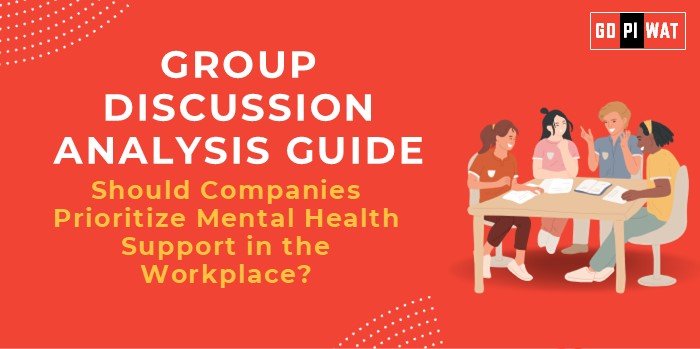🧠 Should Companies Prioritize Mental Health Support in the Workplace?
🌐 Introduction to the Topic
Opening Context:
Mental health has become a pressing global issue, impacting workplace productivity, employee retention, and overall well-being. With the rise of remote work and job-related stress, organizations are reevaluating their responsibilities toward employee mental health.
Topic Background:
The World Health Organization (WHO) estimates that depression and anxiety cost the global economy $1 trillion annually in lost productivity. Increasingly, businesses are recognizing that mental health initiatives are not just moral imperatives but also strategic necessities for a sustainable and productive workforce.
📊 Quick Facts and Key Statistics
- 💰 Global Productivity Loss: $1 trillion annually due to depression and anxiety (WHO).
- 💼 Workplace Stress Impact: 76% of employees report mental health challenges affecting productivity (APA).
- 📈 Economic Benefits of Support: Every $1 invested in mental health interventions yields $4 in improved health and productivity (WHO).
- 🔥 Burnout Rates: 52% of employees experience burnout, driven by workplace stress (Gallup, 2024).
👥 Stakeholders and Their Roles
- Employers: Develop and implement workplace mental health programs.
- Employees: Advocate for healthier work environments and access to support.
- Government Bodies: Enforce labor laws and promote mental health awareness campaigns.
- Healthcare Providers: Deliver mental health services and training.
- NGOs/Advocacy Groups: Raise awareness and reduce stigma associated with workplace mental health.
🏆 Achievements and Challenges
Achievements:
- 📚 Increased Awareness: Companies like Unilever and Google have implemented robust employee mental health programs.
- 📉 Economic Impact: Mental health initiatives have proven ROI, as seen in programs by large organizations.
- 📜 Policy Advancements: Many governments mandate workplace mental health policies.
Challenges:
- ⚠️ Stigma: Employees often hesitate to seek help for fear of judgment.
- 💸 Lack of Resources: Small and medium enterprises struggle to fund comprehensive mental health programs.
- 📊 Measurement Difficulties: Quantifying the success of mental health initiatives remains a challenge.
Global Comparisons:
- United States: Leading in workplace mental health policies but still facing burnout epidemics.
- Scandinavian Countries: Holistic approaches to work-life balance have shown consistent positive outcomes.
Case Study: India’s Wipro offers counseling services and wellness programs, significantly reducing employee turnover.
📋 Structured Arguments for Discussion
- Supporting Stance: “Prioritizing mental health improves employee morale, productivity, and reduces turnover, creating a sustainable business model.”
- Opposing Stance: “The costs of implementing comprehensive mental health programs could outweigh benefits for smaller businesses.”
- Balanced Perspective: “While the short-term costs of mental health programs may be high, the long-term benefits in terms of productivity and retention justify the investment.”
💡 Effective Discussion Approaches
- Opening Approaches:
- Start with a statistic: “76% of employees report mental health affecting their productivity.”
- Ask a provocative question: “Can businesses afford to ignore mental health in a competitive labor market?”
- Counter-Argument Handling: “While costs may seem prohibitive, scalable and affordable solutions like online counseling platforms exist.”
📈 Strategic Analysis of Strengths and Weaknesses
- Strengths: Improved productivity, employee satisfaction, and brand reputation.
- Weaknesses: High implementation costs and lack of expertise.
- Opportunities: Technological innovations like AI-driven mental health tools.
- Threats: Rising expectations from employees may strain resources.
🎓 Connecting with B-School Applications
- Real-World Applications: Aligning with HR, operations, and leadership project themes.
- Sample Interview Questions:
- “How can companies measure the ROI of mental health initiatives?”
- “What role does leadership play in fostering a mentally healthy workplace?”
- Insights for B-School Students: Understanding workplace mental health prepares students for HR roles, leadership positions, and strategic decision-making.


